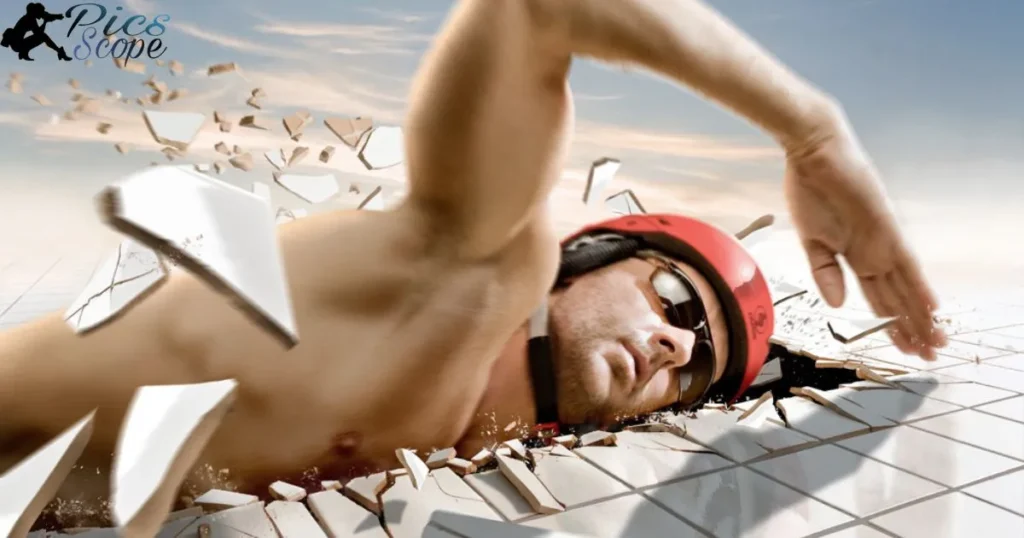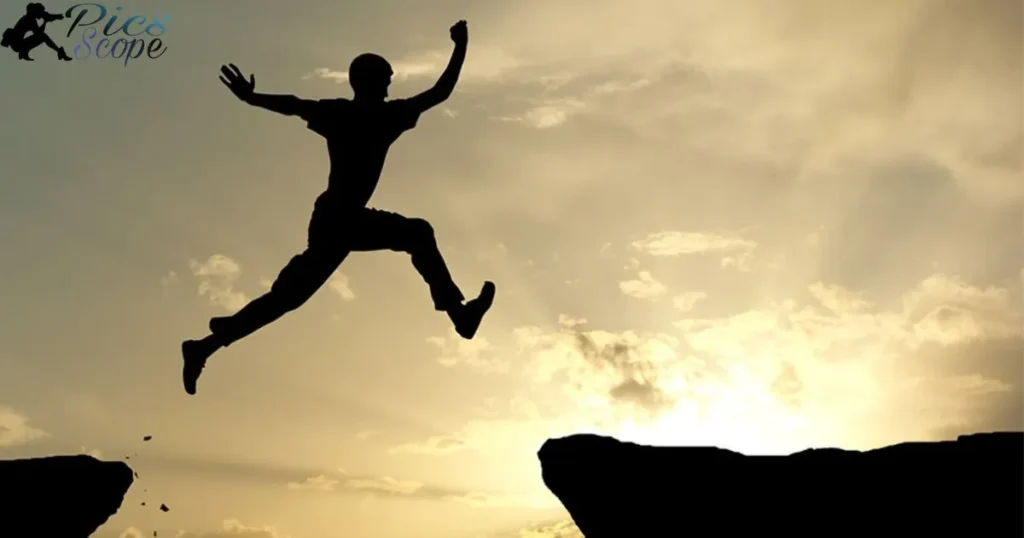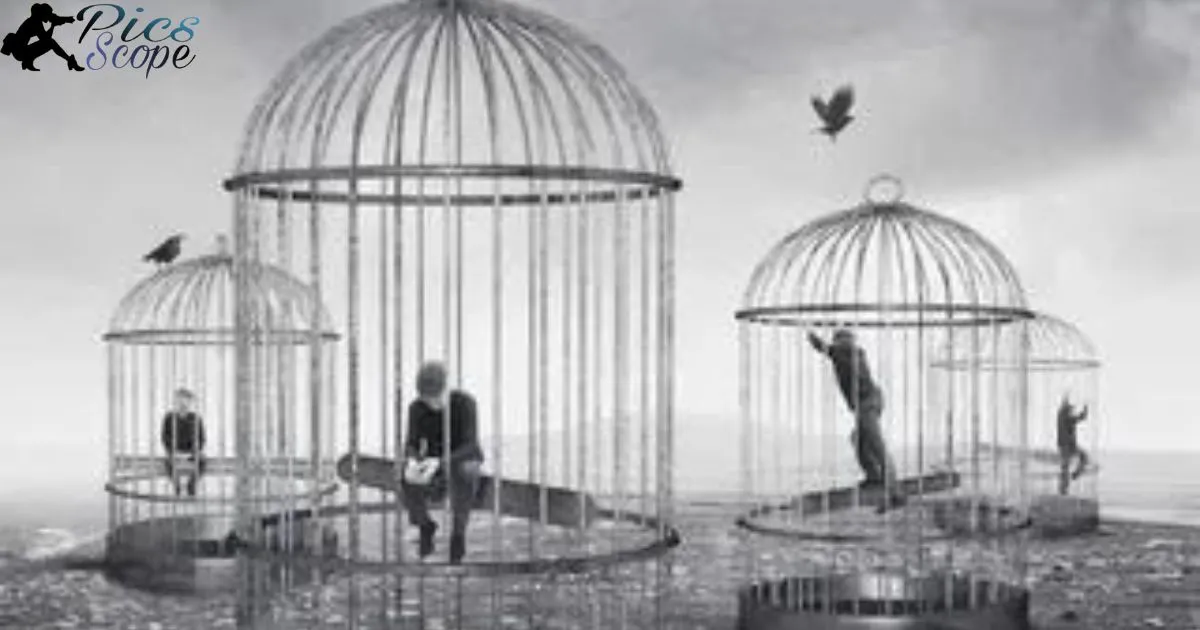Early examples of art photography often imitated narrative painting. Narrative painting depicts the details and events of a well-known story, myth, or historical event with great accuracy and realism. As photography developed in the early 19th century, photographers sought to emulate the realistic style and storytelling ability of these narrative paintings.
Early Examples Of Art Photography Often Imitated What Genre?” This question refers to the early tendency of art photography to replicate the narrative style of painting. In particular, early art photographers tried to capture the realism, detail, and storytelling seen in various schools of narrative painting.
In its infancy, the new artistic medium of photography looked to established art forms for inspiration on technique and style. Many early art photographers chose to model their images after narrative paintings – artwork that illustrates the specific scenes and tales of mythology, literature, biblical stories, and historic events.
What artistic styles influenced early photography?
Early photography was heavily influenced by contemporary painting styles and genres. Specifically, many early art photographers sought to imitate narrative and history painting, which aimed to tell stories and depict important events in a highly realistic style.
In particular, photographic pioneers looked to masters like Caravaggio, Raphael, and Peter Paul Rubens as inspiration. They admired the dramatic lighting, lifelike detail, and grand mythological, biblical, and historical subject matter found in such narrative paintings. Early photographers then tried to emulate these qualities in their own images.
What specific paintings did photographers try to emulate?
Early art photographers frequently tried to recreate famous narrative paintings in photographic form. For example, Oscar Gustave Rejlander’s monumental 1857 photograph “The Two Ways of Life” directly mimics religious and moral narrative paintings.
Other photographers strived to emulate Raphael’s iconic “Sistine Madonna” and Michelangelo’s majestic frescoes on the Sistine Chapel ceiling in Rome. There was also great interest in recreating dramatic Baroque paintings that depicted grand mythological, biblical, or historical scenes.
Images like Rembrandt’s “The Night Watch” and key works by Rubens and Caravaggio were widely admired and imitated by early photographers seeking to elevate the status of photography as an art form.
Why did early photographers want to imitate art?
Early photographers imitated established painting styles and techniques in order to help legitimize the new medium of photography as a valid art form. Since painting had a long artistic heritage, mimicking its formal compositional styles and grand subject matter was seen as a way to have photography taken more seriously by critics, artists, and the wider public.
Many photographers also admired the visual storytelling of narrative painting and wanted to see if photography could achieve similar emotional impact and drama. Testing the creative boundaries of the new medium by imitating painting was viewed as important for developing photography’s artistic potential.
What Genres of Painting Did Early Photographers Imitate?
Early photographers sought to imitate the respected painting genres of their time, including history paintings, portraiture, genre scenes, landscapes, and still lifes. History paintings were considered the highest form of art, using theatrical, large-scale pictures to illustrate moral stories from history, mythology, or the Bible.
Portraiture was the next most prestigious genre. Lower ranked genres included scenes of daily life (genre), Art Photography Often Imitated What Genre landscapes, and still lifes. Photographers were limited in directly imitating the most esteemed forms like history paintings due to technical constraints with early cameras.
Photographers found ways to emulate the storytelling function and noble themes of history paintings through documenting actual events as they unfolded. They also took portraits, which were easier to capture with early equipment. Some photographers even tackled mythological or biblical scenes through combination printing.
How did photographers imitate narrative paintings?
Though unable to directly reproduce the large multi-figure history paintings of their day, innovative photographers found ways to tell stories through images of real events. As camera exposure times shortened, photographers could capture narratives as they happened, such as newsworthy incidents.
Their sequential shots showing progressions of events sought to emulate the morally instructive functions of history paintings Photographers also pioneered combination printing techniques to blend multiple negatives into a single image.
This allowed them to assemble more complicated multi-figure scenes that approached history paintings in complexity. Though the figures were captured separately, photographers composed them to interact logically within imagined narratives, imparting messages similarly to the venerated paintings of the past.
What mythological or biblical scenes did they photograph?
Mythological or biblical scenes were considered among the most noble subjects for large-scale history paintings. Photographers in the early period of the medium were highly limited in directly reproducing such scenes due to long exposure times that made capturing moving figures nearly impossible.
Oscar Rejlander created an elaborate 32-negative combination print illustrating a scene of the Parable of the Prodigal Son in 1872. So while direct photographic captures of figures enacting holy stories were impossible early on, photographers could approximate the grandeur of mythological and biblical history paintings through clever darkroom techniques.
What historical events did early photos portray?
Rather than staging narratives as in history paintings, early photographers could capture actual events as they unfolded, revealing moments of historic importance. Faster exposure times allowed the medium’s unique capability for documentary imagery, recording incidents such as battles, disasters, public ceremonies, or visits from dignitaries on site as they transpired.
Early news photography provided images of events like the 1847 Hungarian Revolution, the 1855 Fall of Sevastopol, or the 1863 Gettysburg Address. These images imparted the same sense of significance as history paintings.
How Did Imitating Paintings Limit Photographic Creativity?

Early photographers struggled to be seen as artists on par with painters. As a result, they tried to imitate the styles and conventions of painting, such as history paintings, portraits, genre scenes, landscapes, and still lifes. The technical limitations of early photography made directly imitating paintings difficult.
For example, long exposure times prevented capturing complex multi-figure scenes1. By strictly adhering to painting’s aesthetics and subject matter hierarchy, early photographers limited the creative potential of the new medium.
Imitating painting also meant early photographers overlooked unique photographic qualities like the ability to objectively capture reality or freeze motion. They were so focused on matching painting’s visual style that they failed to explore aspects like unconventional angles, close-ups, or snapshots of life not typically painted.
Did imitation restrict photographic innovation?
Trying to imitate established painting aesthetics and techniques did initially restrict photographic creativity and innovation. Early photographers were so focused on mastering technical processes and debating whether photography should be considered an art or science, they struggled to establish a unique visual language.
While photographers did make technical innovations, aesthetically they worked within painting guidelines, such as conveying tone, texture, and detail in a monochrome format. This limited photographers from discovering innovative compositional techniques, perspectives, or subjects tailored specifically for the camera.
However, imitating painting was largely restricted to early photography. As cameras improved and became more accessible later in the 19th century, photographers gained more freedom to experiment. No longer confined to painting aesthetics, photographers began exploring unconventional angles, motion studies, snapshots, and other innovative approaches only possible via the camera.
What unique strengths of photography were overlooked?
By trying to imitate established painting styles and subjects early on, photographers overlooked unique photographic strengths like the ability to objectively capture reality or freeze motion. Overlooked qualities included the capacity for unconventional perspectives and close-ups, taking candid snapshots of everyday life, and conveying precise visual details painting could not match.
Eadweard Muybridge’s motion studies conclusively analyzed horse gaits through stop-motion photography, something impossible to capture via painting. The camera’s strengths in objectivity, unconventional angles, motion studies, close detail, and daily life snapshots were initially overlooked because photographers were so focused on matching the aesthetics and capabilities of painting.
But later practitioners like Muybridge demonstrated the creative potential of embracing photography’s unique technical and visual abilities rather than just imitating painting. As a result, photography evolved into its own distinct art form.
How could photographers have been more creative
Early photographers could have been more creative by relying less on imitating painting themes, styles, and techniques. Instead, they should have explored unconventional perspectives, snapshots, motion studies, and close-ups tailored to the camera’s unique strengths.
For example, rather than forcing multi-figure history paintings, they could have captured candid street scenes showing slices of life. Or instead of generic landscapes, creative angles like worm’s-eye views. Early photographers also should not have limited themselves to established fine art subjects – everyday scenes, commercial subjects, and events offered endless creative opportunities.
Willingness to experiment with the latest photographic technology could have sparked creativity. Rather than debating art versus science, leaning into technical aspects could have driven innovative visual approaches.
Photographers also could have been more creative by forming collectives to share ideas, like how the Hudson River School painters influenced each other’s styles. Had early photographers relied less on imitating painting and more on photography’s inherent qualities, they would have discovered a new creative vision far sooner.
What Impact Did Imitating Paintings Have on Early Photography?
Early photographers often imitated paintings in their work, attempting to recreate the style and subjects of fine art. This was partly due to technical limitations – long exposure times made it difficult to photograph moving subjects or complicated scenes. It was also an attempt to gain legitimacy and respectability for the new medium of photography by aligning it with established art forms like painting.
Imitating paintings also influenced public perception of photography. By mimicking prestigious art, early photos gained an air of importance. Scenes from history and mythology, once only captured in fine art, could now be recorded by the camera.
This helped position photography as a tool for documenting significant events and conveying meaning or messages to viewers. The public saw value and artistry in photos that followed respected artistic conventions.
How did it affect public perception of the new medium?
As discussed above, imitating paintings positively impacted public opinion about photography. By aligning with painting styles and subjects, early photographs gained an elevated status. Rather than being seen as a mechanical reproduction, photos that followed artistic principles were appreciated as artworks themselves.
The public was able to relate to these images and understand them as they would paintings conveying drama, symbolism, or meaning. It also made photography more accessible and desirable to the general public. Where only the wealthy could afford commissioned paintings, the invention of photography allowed portraiture and art to reach wider audiences.
Did it help photography gain legitimacy as an art form?
Yes, imitating painting subjects and aesthetics was an effective early strategy for positioning photography as a valid art form. Following respected schools of painting aligned the new medium with established fine art traditions.
Using similar styles, compositions, and meaningful themes helped raise photography’s profile. When early photographers sold their work as finished art pieces rather than industrial images, it further solidified ideas of photographs as artworks.
However, some argue that slavishly following painting’s guidelines also constrained photography. Only by exploring its unique properties, like capturing transient moments or blurred movement, did photography come into its own as an artistic medium. But referencing the classics likely helped gain initial acceptance.
Did painters see it as a threat to traditional art?
Some painters did view photography’s realism and accuracy as a threat. Since photography could reproduce details, textures, and lifelike images more easily, the value of highly realistic painting declined. Genre paintings and portraiture could now be done faster and cheaper by the camera.
This also liberated painters to explore new directions like Impressionism and abstraction. Instead of competing with photography in accuracy, avant-garde painters shifted to evoking emotions, using brushstrokes and color.
While some saw photography as a rival, leading painters invented new styles beyond the camera’s capabilities. They ceded straightforward realism to embrace creativity, interpretation and expressiveness instead. This gave painting renewed purpose.
When Did Photography Develop Its Own Artistic Style?

Photography developed its own artistic style in the early 20th century. In 1902, Alfred Stieglitz founded the Photo-Secession movement which promoted photography as a fine art rather than just a documentary tool. Stieglitz and the Photo-Secessionists manipulated images to achieve a subjective artistic vision rather than merely capturing reality.
This was a radical idea at the time. However, it took several decades for photography to gain widespread acceptance as an art form equal to painting and sculpture. Critics began to appreciate photography as art only in the 1920s and 1930s as photographers like Ansel Adams created striking black and white landscape photos.
So while a few pioneering photographers saw the artistic potential of the medium right away, it took until the mid-20th century for photography to be fully embraced as an artistic medium in its own right.
Who were some pioneers in more creative photography?
Some key pioneers in pushing photography into more creative directions were Alfred Stieglitz, Paul Strand, and Man Ray. Alfred Stieglitz was the founder of the Photo-Secession movement in 1902 which promoted photography as a fine art.
His striking urban scenes and portraits from the early 1900s were more subjective and artistic than typical photos of the era. Paul Strand was an early modernist photographer who created abstract close-up images in the 1910s that revealed a new way of seeing common objects.
And Man Ray was a prominent avant-garde artist in the 1910s/1920s who combined photography, painting, film and found objects to create unique and provocative works that brought photography into the realm of modern art. These photographers broke from merely documenting reality and instead used the medium as a form of creative expression.
What innovative techniques did they introduce?
Some innovative techniques pioneered in early creative photography included abstraction, unconventional angles/framing, photomontage, combination with other media, and darkroom manipulation.
Abstraction was introduced by modernist photographers like Paul Strand who took extreme close-ups of objects to create images with shapes and patterns not normally seen. Unconventional angles and framing were employed by Alfred Stieglitz in his striking urban architecture photos to create a new perspective.
Hannah Höch and others pioneered photomontage by combining multiple photographic images together into an artistic collage. Man Ray combined photography with painting, film and found objects to create multi-media works.
And many photographers creatively manipulated images in the darkroom through techniques like solarization and multiple exposures. These innovative techniques allowed photographers to move beyond documentation and develop a new visual language.
How did photography find its own visual language
Early in its history, photography tended to imitate the aesthetics of painting, with carefully composed scenes depicting important events and prominent people. But over time, pioneering photographers found ways for the medium to develop its own unique visual language. Photographers discovered they could capture the spontaneity of life like never before, depicting real people and events in motion and from unconventional angles.
The camera allowed them to reveal new ways of seeing the world through close-ups and abstract slices of objects/scenes. And photographers found they could manipulate the developing process to create dreamlike, subjective images.
So rather than merely record reality, photography evolved into a flexible medium of self-expression. Modernist photographers like Stieglitz, Strand and Ray introduced a more personal, emotional aesthetic that was uniquely photographic.
By the 1920s/30s this new photographic vision was widely appreciated as artistic. So through technical innovation and creative experimentation, pioneering photographers developed a distinctive visual language for the medium that came to be recognized as art.
FAQ’s
Early Examples Of Art Photography Often Imitated What Genre
History painting and portraiture
What Was The First Photographic Society Formed To Promote?
The consideration of photography as an aesthetic medium
What Did Early Photographers Debate Regarding The New Medium?
Whether it should be viewed as an art or science
How Did Some Photographers Mimic Artistic Effects In Early Photos?
By manipulating images to emulate styles like Barbizon and Impressionism
What 20th Century Art Movement Helped Gain Photography Acceptance As Art?
Modernism, through its focus on subjectivity and abstraction
Conclusion
Early photography often imitated the style of painting and other established art forms. Photographers struggled to have the new medium viewed as its own art rather than just a technical novelty. So early examples of art photography borrowed heavily from history paintings, portraits, landscapes, and still life compositions.
Photographers developed more innovative techniques like abstraction, unconventional angles, and darkroom manipulation. As photographic equipment improved, artists had more flexibility for creative expression.
Pioneers like Stieglitz and Strand pushed the boundaries of photography as documentation and found its unique visual language. By the 1920s, photography came into its own as an artistic medium with a distinctive aesthetic.







